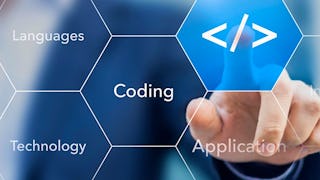Updated in May 2025.
This course now features Coursera Coach! A smarter way to learn with interactive, real-time conversations that help you test your knowledge, challenge assumptions, and deepen your understanding as you progress through the course. This course provides a deep dive into applying Object-Oriented Programming (OOP) techniques to Arduino development, allowing you to create modular, reusable, and efficient code. Starting with the fundamentals, you’ll quickly progress through designing custom classes to control LEDs and push buttons. Each lesson is designed to build your skills incrementally, from creating basic class structures to handling more complex logic, such as debouncing buttons and working with multiple objects. As you move forward, you'll learn how to organize your code by separating the class interface and implementation into header and cpp files, which not only enhances clarity but also makes your code more maintainable. By the end of this phase, you will even package your classes into an Arduino library, making your work reusable in future projects. The course culminates in the development of a traffic light system with multiple LEDs and a state machine, while introducing advanced techniques like using potentiometers to control brightness. Each project builds on the last, ensuring that by the end, you’ll have a complete understanding of how OOP can optimize your Arduino projects. Whether for personal projects or professional use, you'll leave with the confidence to apply these concepts to any embedded system. This course is ideal for Arduino enthusiasts, makers, and engineers looking to elevate their coding skills by learning Object-Oriented Programming (OOP) principles. Some familiarity with Arduino and basic programming knowledge is recommended, but no prior experience with OOP is necessary.




 enthalten
enthalten















